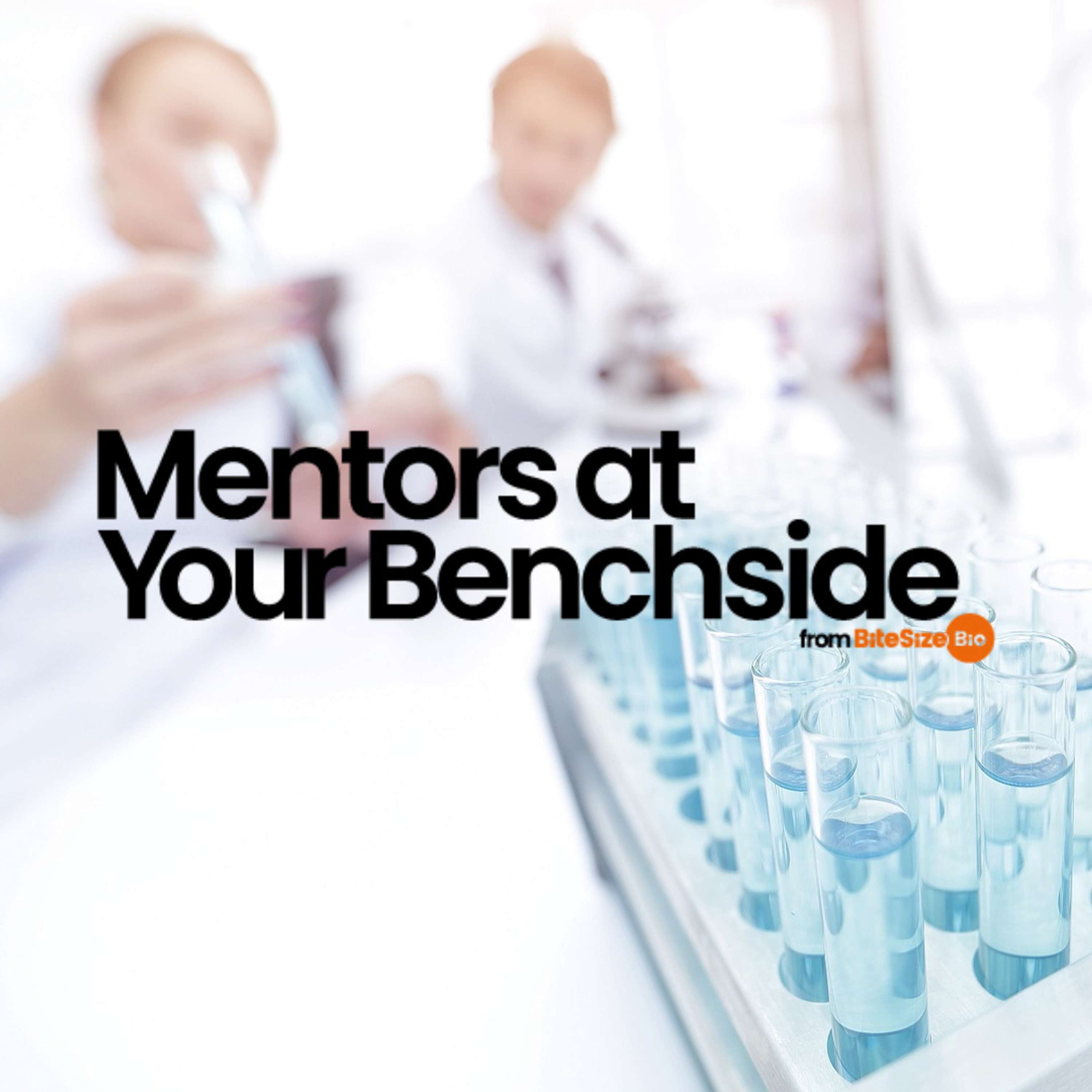Mentors at Your Benchside
A good mentor can be the difference between success and failure. But what to do if you don't have help on hand? Mentors At Your Benchside provides curated help and advice from experienced researchers on various topics, from lab skills and techniques to career progression. Each short episode is bursting with easy-to-access help and advice that can improve your results and help you get the most out of your time in the lab. https://bitesizebio.com/mentors-at-your-benchside
Hepatocyte Counting Methods: From Manual Counts to Fast, Accurate Automation
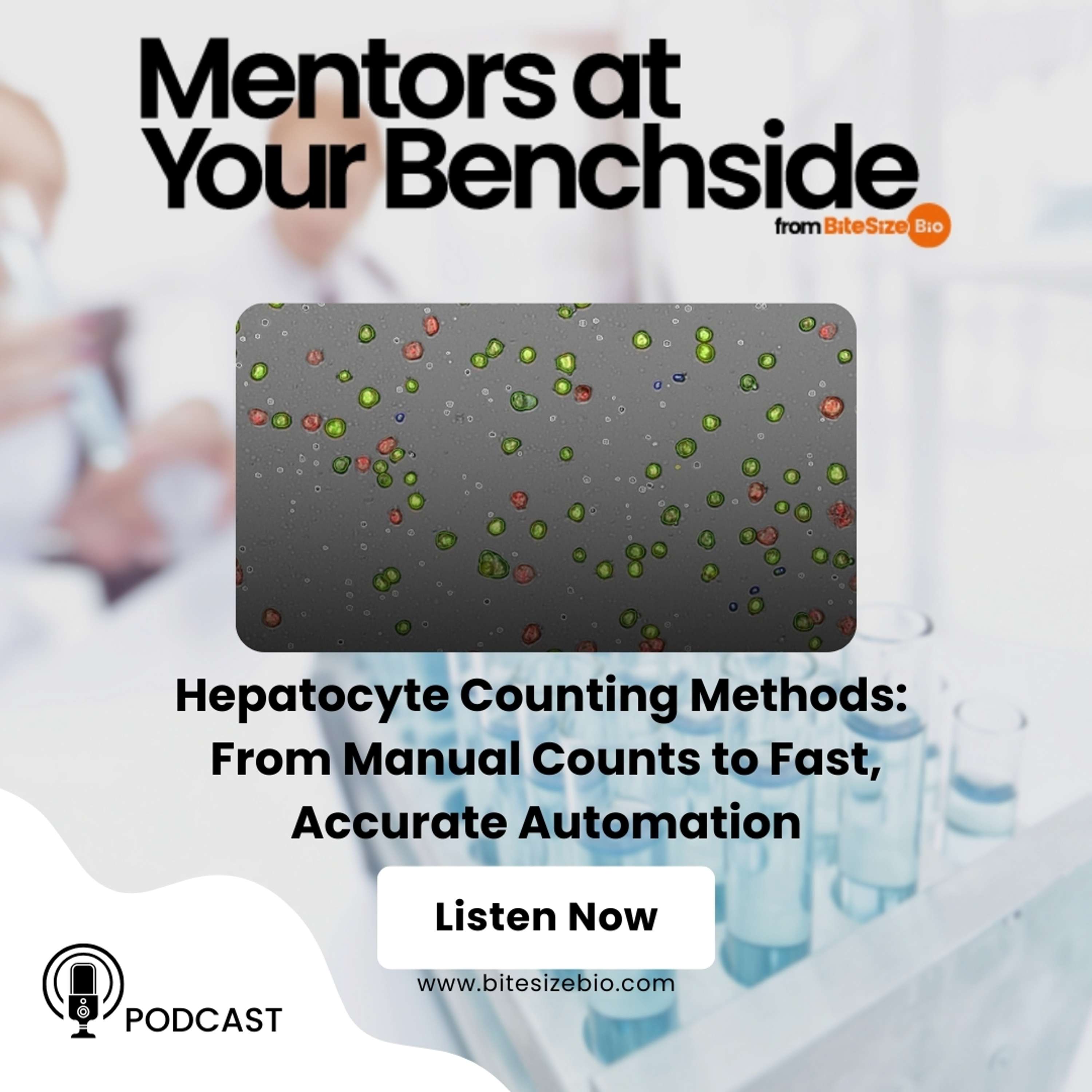
#1 — Hepatocytes are liver cells that are essential for its function. They are also essential for certain branches of drug testing and diagnostics.
However, they have irregular shapes, multiple nuclei, and can clump, which makes them difficult to process and count accurately.
In this episode, we explain how to prepare the best hepatocyte samples possible.
We also explain the latest automated machine learning-based tools that make hepatocyte counting easy and do essential sample-based calculations for you, removing tedious math. See the full article here. [1]
For more details on the machine learning technology di...
Single Cell Sequencing: Tips to Optimize Nuclei Extraction and Counting
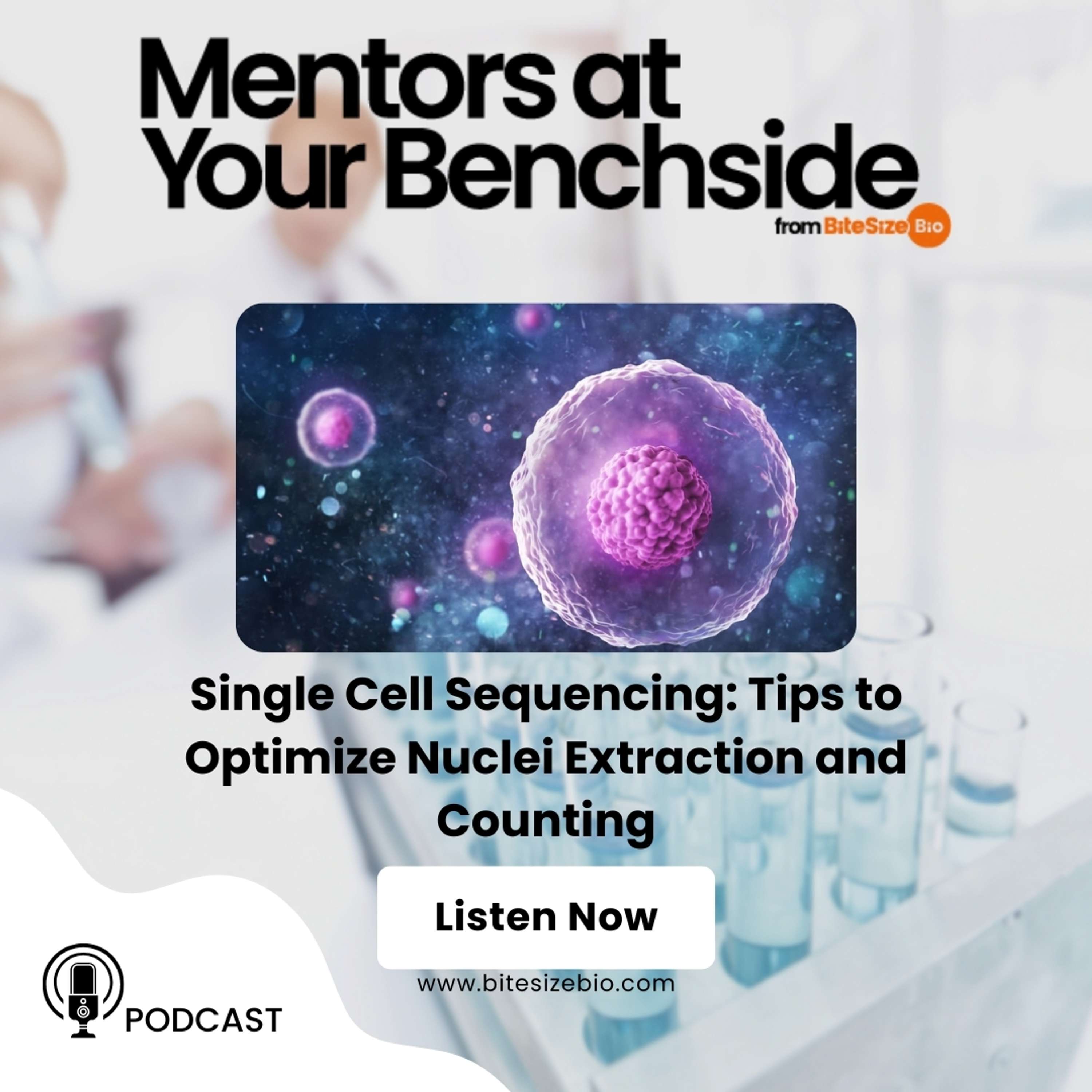
#114 — High-quality nuclei extraction is pivotal for many genetic and epigenetic studies, including single cell RNA-seq to describe transcriptomic profiles and gene expression dynamics and ATAC-seq to determine chromatin accessibility.
But nuclei samples are extremely delicate and can be challenging to prepare and count.
In this episode, we provide some practical tips to prepare high-quality nuclei extracts and tailor your extraction protocol to your sample.
We also compare methods to count nuclei, assess their quality, and demonstrate how automated nuclei counting can improve your workflow.
Check out the original article for a gr...
Personal Advice on How to Respond to Criticism of Your Grant Proposal Reviews

#113 — Learning how to respond to criticism is an unavoidable aspect of grant applications. Follow all instructions from funding agencies to avoid immediate rejection.
This episode of Mentors At Your Benchside gives you some simple strategies to ensure you respond to criticism in a constructive and proportionate way.
For example, identifying reviewers can help you tailor your responses, but don't mention them by name! Plus, using a two-column document to systematize the criticisms and responses is a great way to organize feedback and distance yourself emotionally from it.
Hit play for more tips, check ou...
Isoelectric Focusing: A Simple Way to Enhance Your Protein Separation
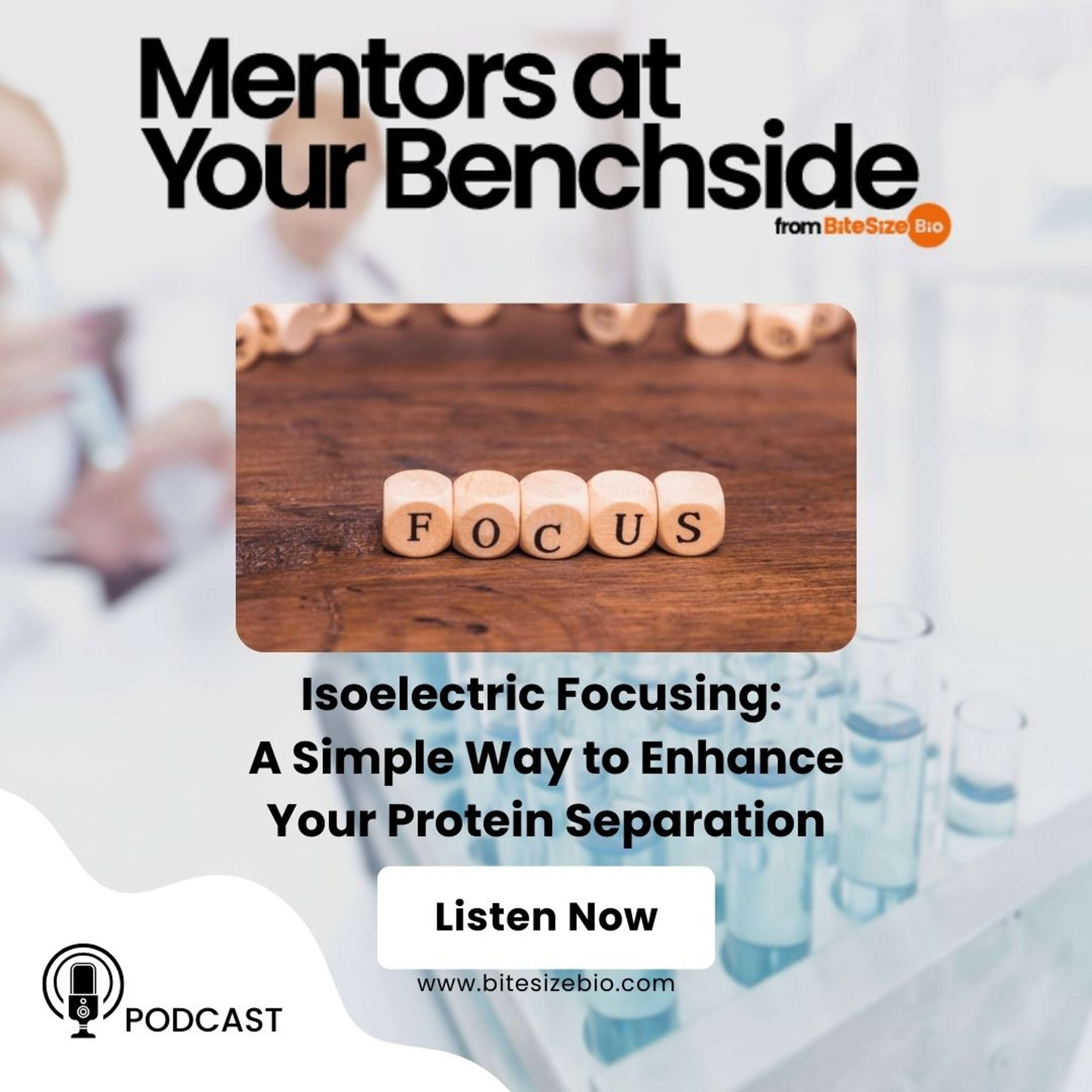
#112 — Isoelectric focusing (IEF) is a powerful technique distinct from the more familiar SDS-PAGE, [1,2] tailored for separating proteins or peptides based on their isoelectric points (pI). [3]
This method capitalizes on the migration of charged molecules through a stable pH gradient until they reach a zone where their net charge is zero, halting their movement.
Essential to setting up an IEF experiment are the IPG strips, equipped with a pH-responsive gel, and the sample, often mixed with carrier ampholytes for efficient migration.
IEF's utility spans various applications, from enhancing 2D-PAGE protein separations to analyzing post-translational mo...
Top 10 Uses of Microbes in Biotechnology
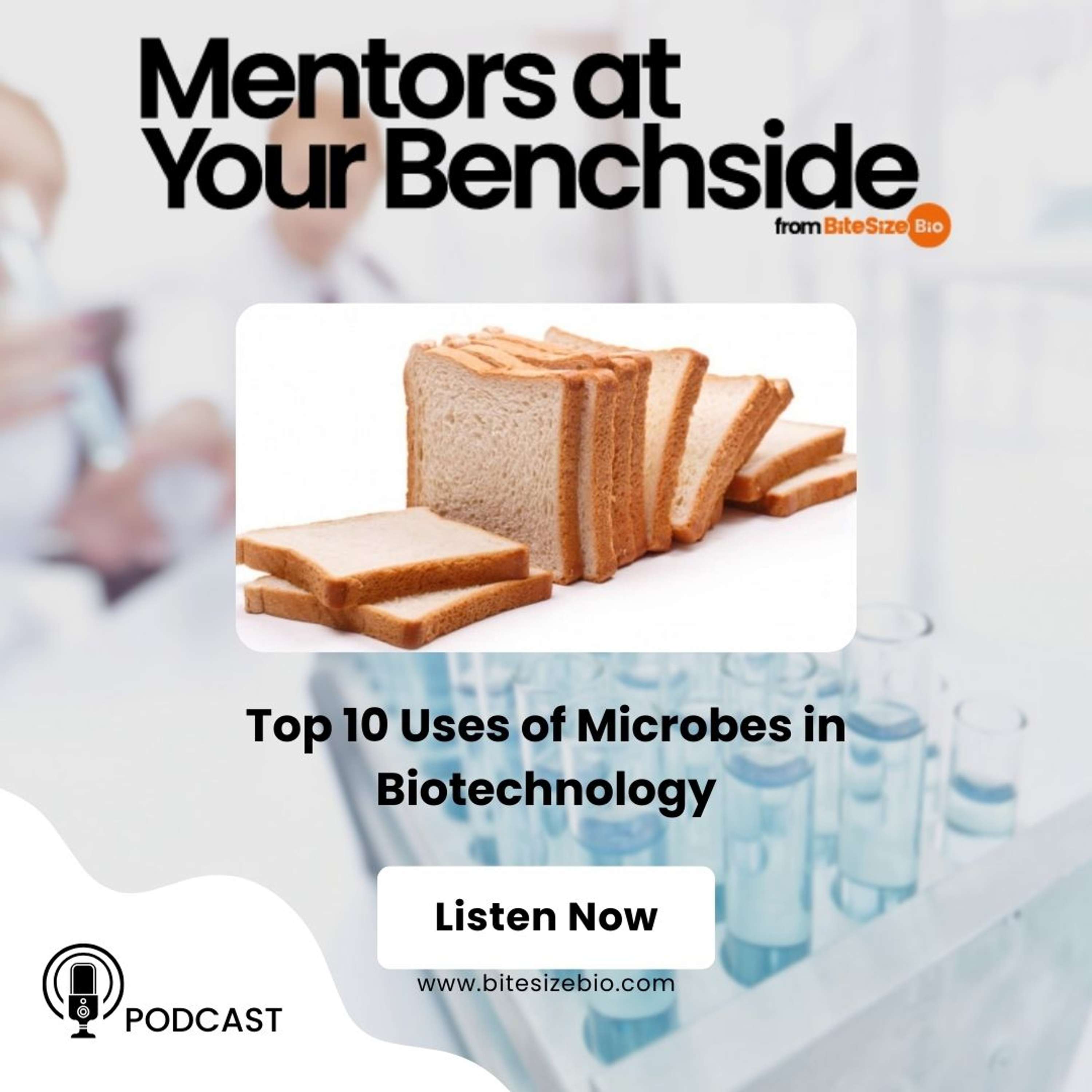
#111 — In this episode, we dive deep into the fascinating world of microbes and their revolutionary applications in biotechnology. From environmental solutions to breakthroughs in health and medicine, microbes hold the key to some of the most advanced scientific developments.
Discover how these microscopic organisms are transforming industries and pushing the boundaries of what's possible in science and technology. We’ll explore the latest research and applications that are shaping the future.
For an in-depth look at this topic, make sure to read the corresponding article on our website. [1] Dive into an application you almost certainly know...
Let’s Talk About Stats: Methods for Comparing Two Sets of Data
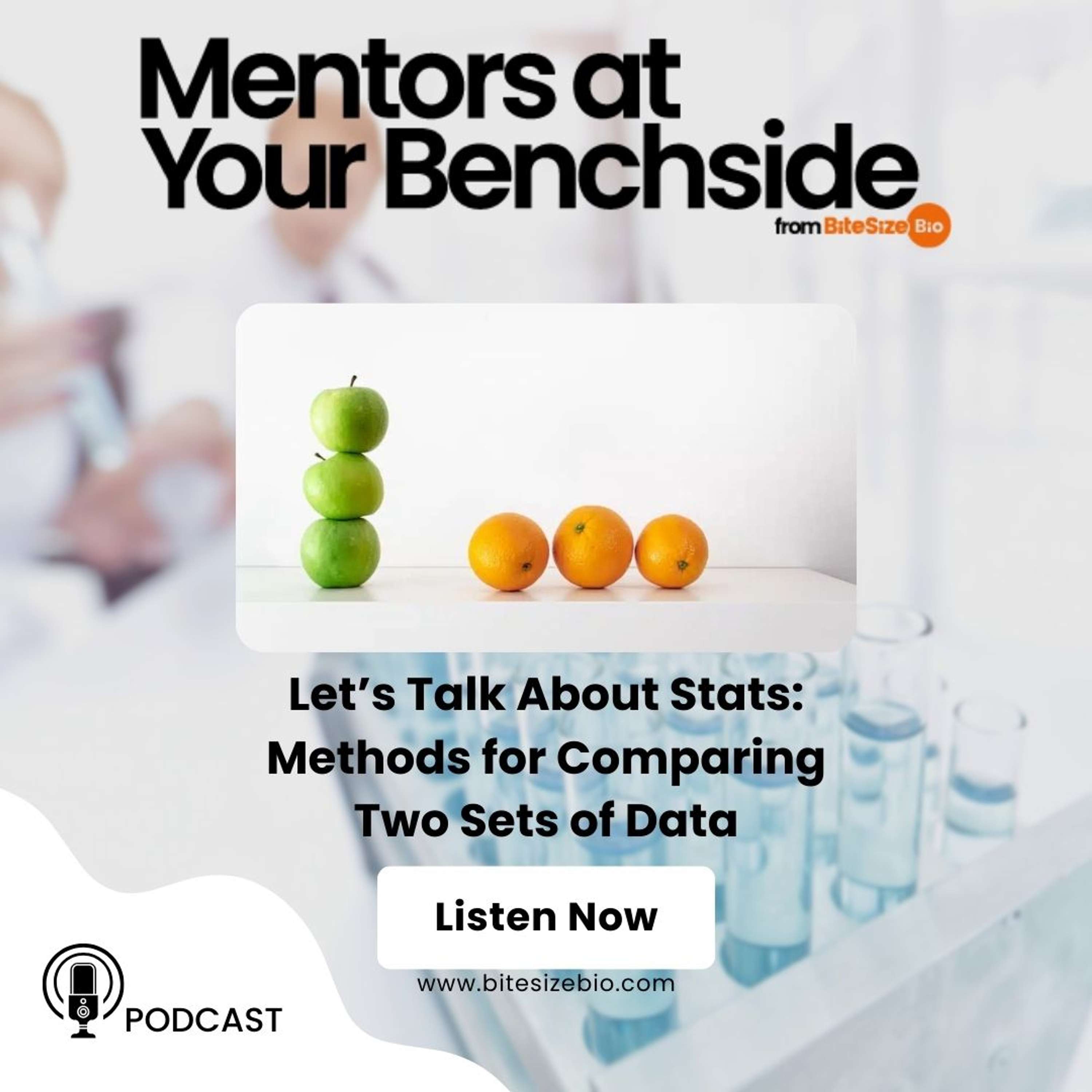
#110 — Comparing two sets of data is a fundamental process in statistical analysis, crucial for drawing meaningful conclusions across various fields. Whether it's for determining the success of an intervention, understanding market trends, or validating scientific research, the need for comparison arises.
This episode delves into the essence of data comparison, focusing on two prevalent statistical tests: the Student’s t-test and the Mann–Whitney U test. [1] Each test comes with its assumptions and applicability, making the choice between them critical depending on the nature of your data.
Read our related article to learn more about compar...
Personal Advice on Building Your Professional Network. It Takes a Village
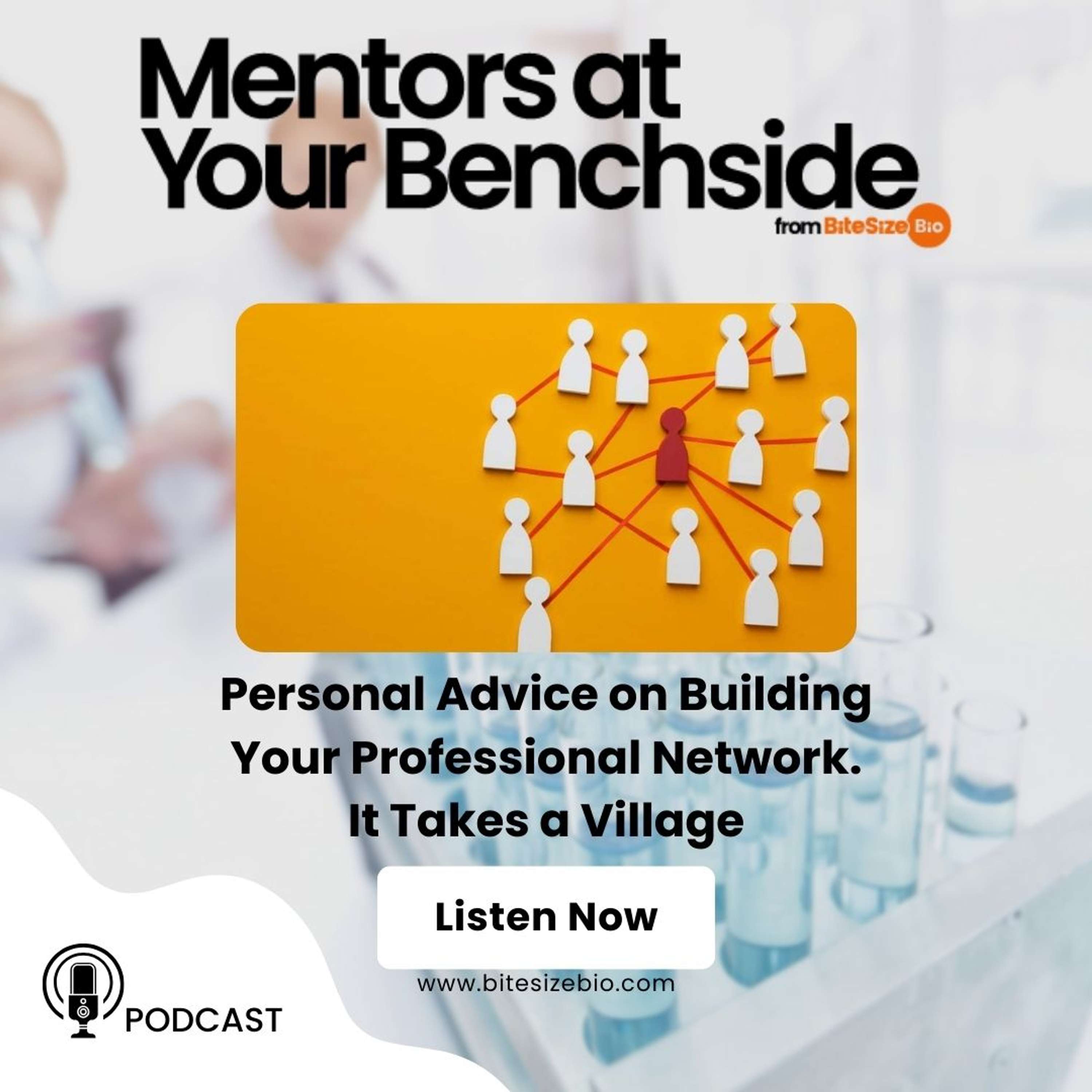
#109 — How do you build a scientific network that gives you the best chance of getting your research funded? How can you identify who to include in your network, and how should you contact them?
This episode explains how to build a scientific network that works for you. We discuss the answers to these questions and provide some examples of collaborations that ended well—and some that didn't.
Check out our online article for additional resources to help get your research funded. [1] If you struggle to convey the impact of your research, you should definitely check out...
4 Fixatives for Histology and Cytometry: Perfect Your Preservation
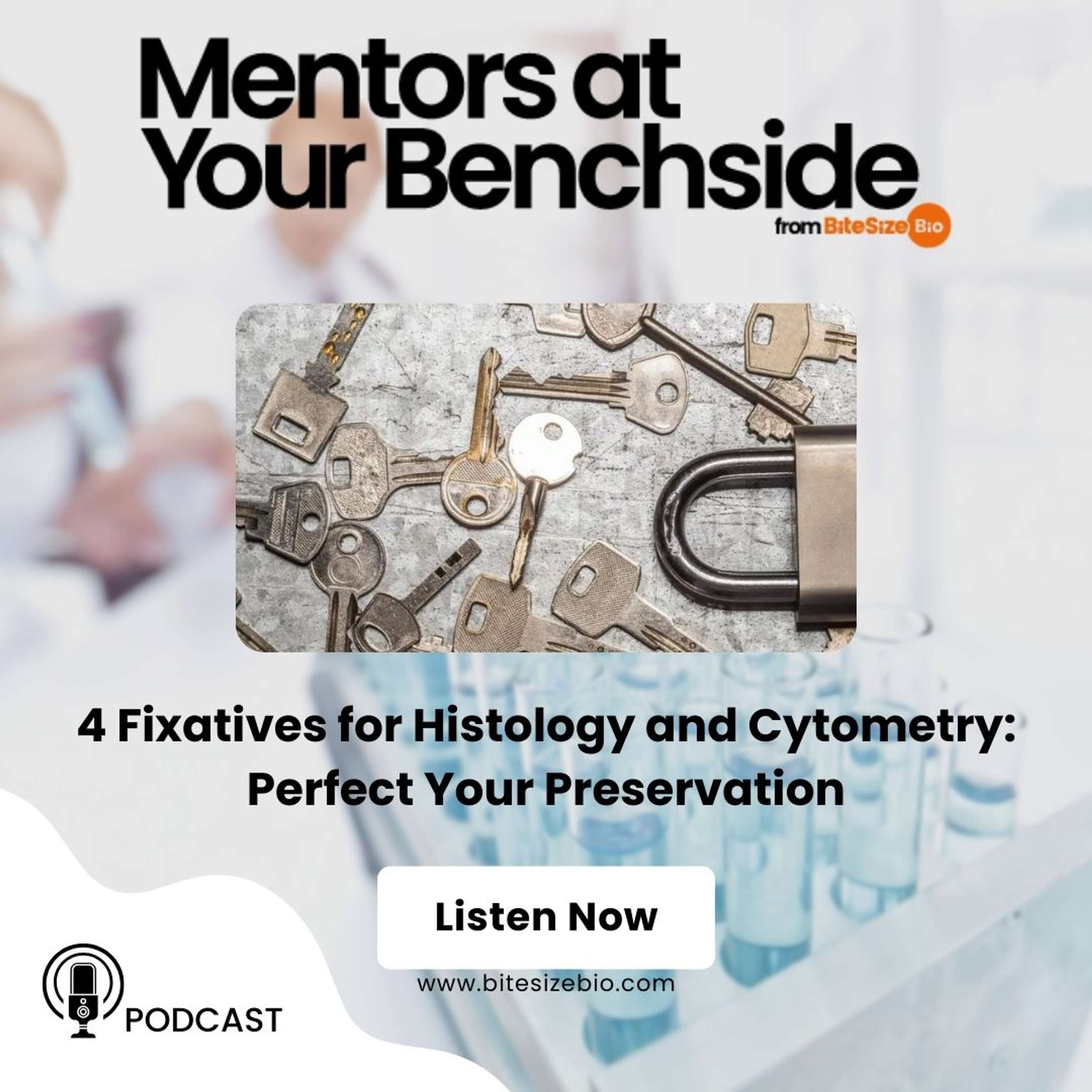
#108 — What should you use to fix your cells? Alcohols or aldehydes? Gluteraldehyde or formaldehyde? And how long will your cells stay fixed?
This episode explains the four main fixatives for histology and cytometry and when to use them. It also provides some practical tips to ensure your fixation works and explains the benefits of combining fixatives.
Check out the corresponding article for links to related resources. [1] To learn more about autofluorescence and the controls you need to check for it, read this article. [2]
Resources
1. 4 Fixatives for Histology and Cytometry. Perfect Your Preservation. Av...
Microscope Disinfection: A Quick Guide
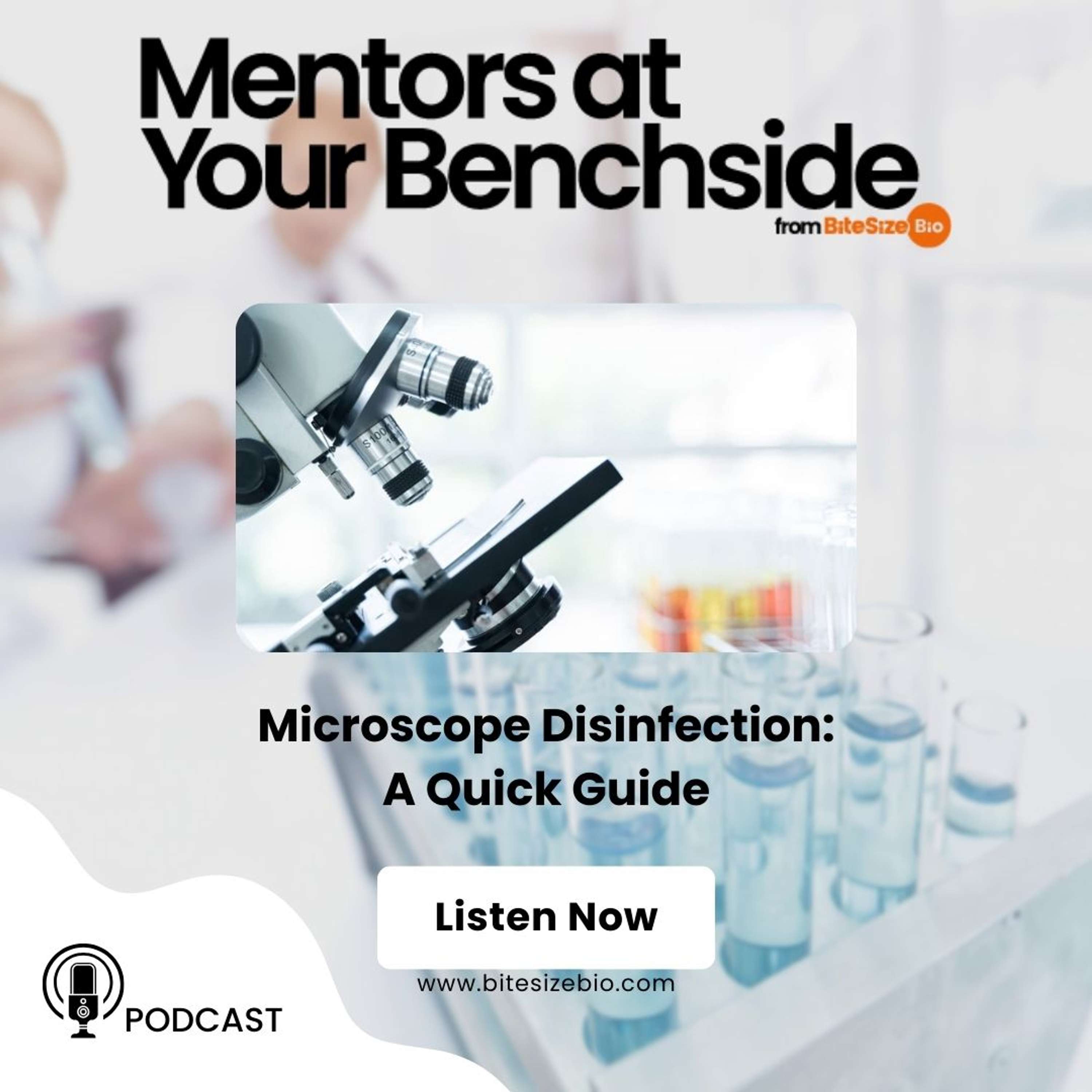
#107 — Need to give your microscope a quick clean to get rid of some grime but unsure what cleaning agent to use? Have you had a nasty sample on there recently and need to disinfect it for the next user?
This episode gives you a quick guide to disinfecting your microscopes, including what solvents are safe to use and the parts you should tackle first.
Check out the corresponding article for helpful references. [1] To get a better understanding of the safety of your samples and other people's, read our introduction to safety datasheets. [2]
Resources:
Tissue Processing For Histology: What Exactly Happens?
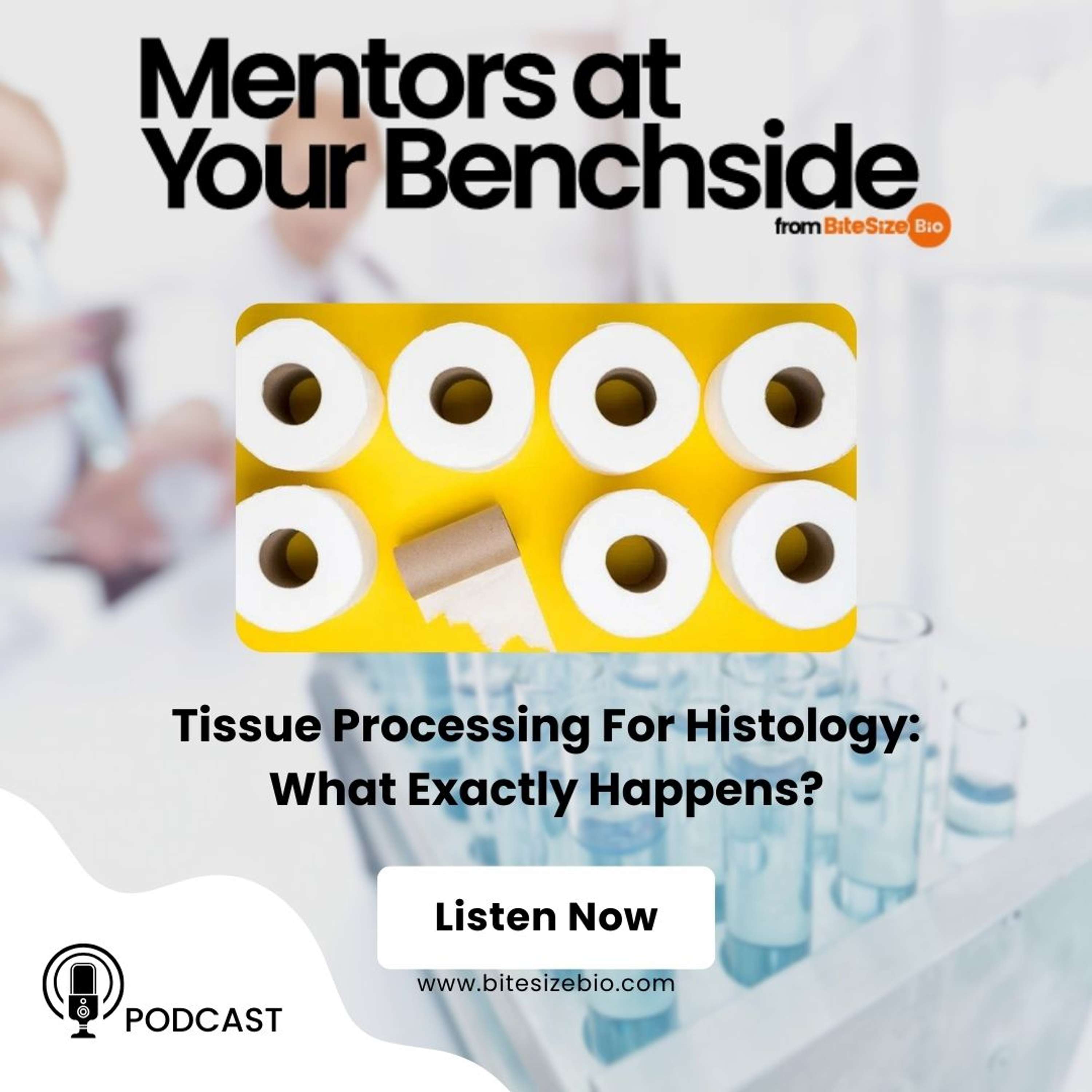
#106 — Transforming a tissue sample into a slide ready for microscopic exploration involves a series of critical steps. Among these, tissue processing is a fundamental phase bridging tissue fixation and the embedding/sectioning of paraffin blocks.
In this episode, discover what exactly happens in this vital in-between stage, and learn about the six steps that ensure your samples are ready for microscopic examination. [1]
And while you're here, check out our related articles on tissue fixation and embedding/sectioning [2,3], and the five important stages in histology slide preparation. [4]
Resources:
1. Tissue Processing For Histology: What Ex...
Multiple Fragment Ligation: The Why and How
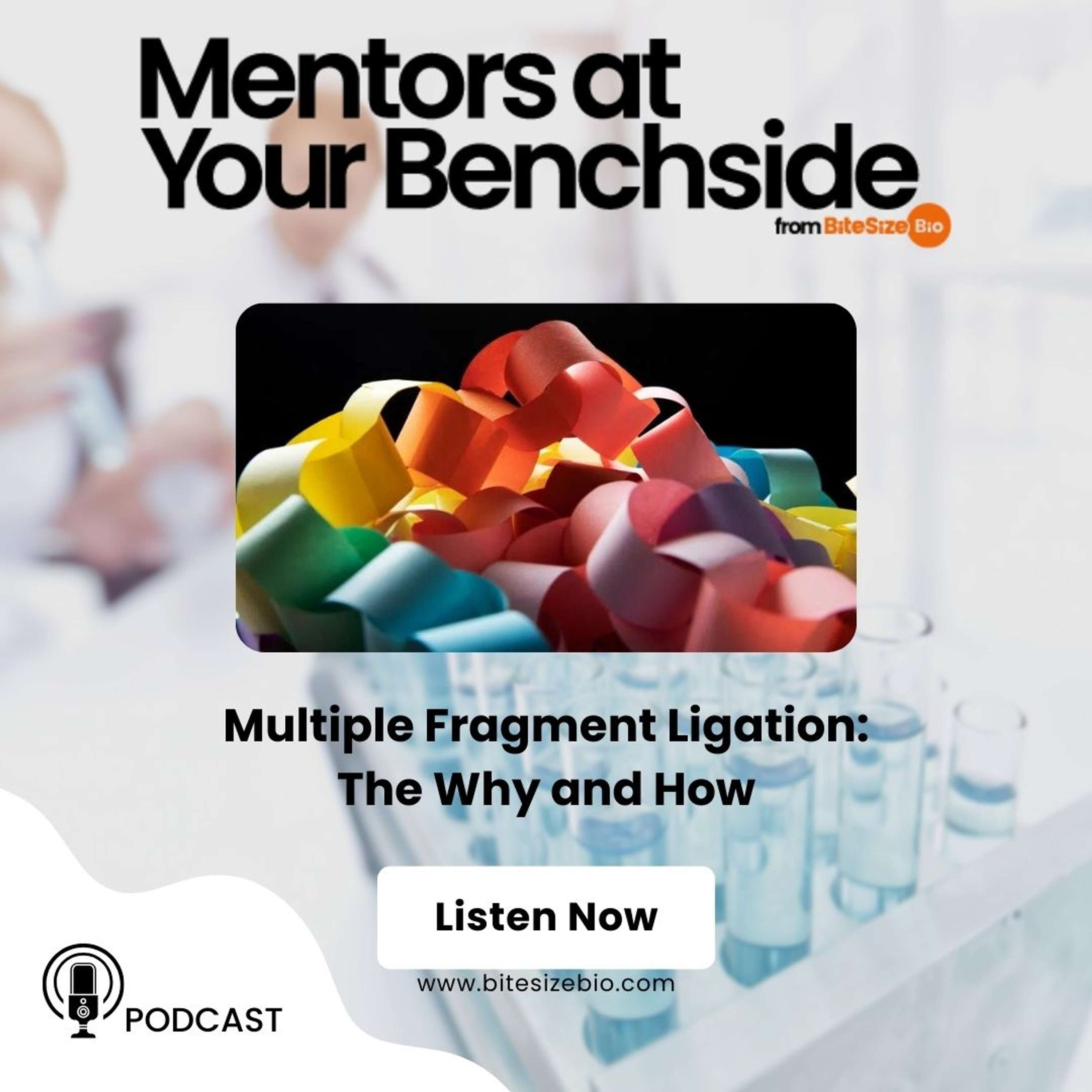
#105 — You may be familiar with standard single fragment ligations: insert, vector, ligase—done! But what if you have a complex cloning project with a massive region of DNA to clone? You can’t PCR the whole thing, and you can’t cut the entire thing out from somewhere else. What do you do?
In this episode, we explain the answer: multiple fragment ligation.
Check out the corresponding article for some handy illustrations and links to related resources. [1] To discover more ways to go about molecular cloning, check out these five approaches. [2] And read this article to dive...
Funding Opportunities and the Flow of Money in Science
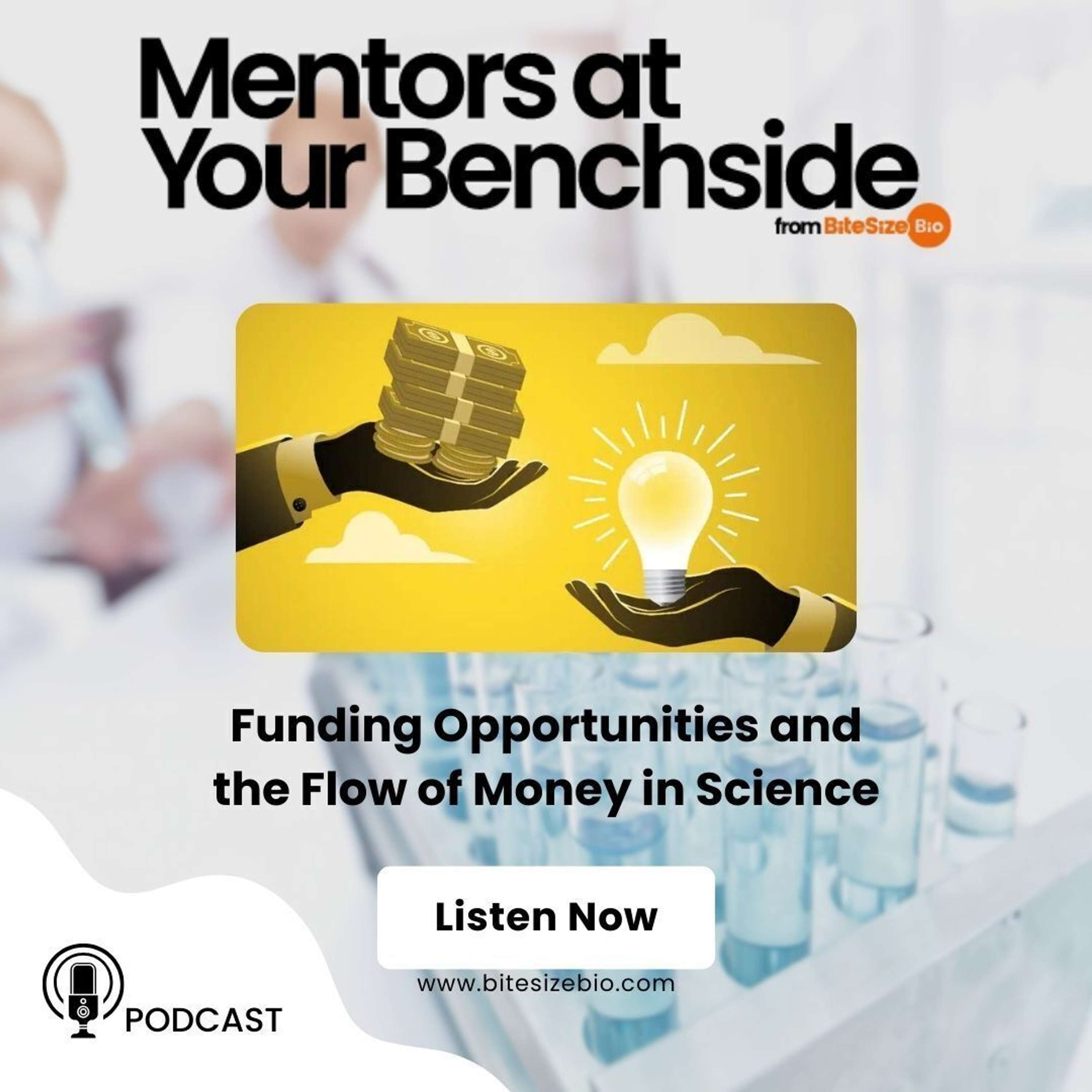
#104 — What funding stream is right for you? Industry or government? Non-profits or crowdfunding? It depends on what you're researching, but also where you want to take your career.
In this episode, Joel Berry, Founder, and Chief Scientist at Astound Research, breaks down the different funding streams and flow of money in bioscience research. Discover the scope and requirements of each type of funding source, and get a breakdown of the overall funding landscape so you can pick the funding stream that works best for you.
Check out the corresponding online article for links to more he...
Maxam–Gilbert Sequencing: What It Is and 3 Modern Applications

#103 — DNA sequencing is a fundamental technique in modern molecular biology that has revolutionized the study of genes.
In the old days, Maxam–Gilbert sequencing was the method of choice, but it has mostly been replaced by Sanger sequencing and Next-Generation methods.
Yet, it still has some niche uses, and in the historical context of DNA sequencing, it’s hugely important!
So, in this episode, learn about what Maxam–Gilbert sequencing is, why it lost popularity, and why some researchers still use it today.
Check out the corresponding article to see if you can...
Confocal Laser Scanning Microscopy Explained In 3 Easy Steps

#102 — Fluorescence microscopy images not only look great but also allow us to get a better understanding of cells, structures, and tissues. And confocal laser scanning microscopy lets us construct 3D images from 2D micrographs.
In this episode, learn the basic principles of confocal laser scanning microscopy, how the microscopes work, and some of its applications in bioscience and beyond.
Check out the corresponding article for a handy confocal laser scanning microscope diagram. [1] Learn about the Airy unit [2] and check out our guide to choosing a fluorescent protein for your experiments. [3]
Resources:
1. Confocal La...
How to Become an Expert at Getting Funded

#101 — Discover what it takes to become an expert at getting funded, from simple habits such as summarizing what you read in the literature, to big steps such as organizing your very own conference to establish your name in your field.
With over 30 years of experience as a biomedical engineering researcher seeking grants, Joel Berry, Founder, and Chief Scientist at Astound Research, shares his hard-won insights on strategizing your approach to seeking grants. [1] Take a listen to what he has to say.
If you're struggling to keep up to date with the literature in your field, rea...
5 Types of Difficult Lab Supervisor and How to Handle Them

#100 — Science attracts so many different and quirky personalities that you are bound to have some people you just don’t get along with. Conflicts happen, and there are many strategies you can take to deal with conflict in the lab. But when your lab supervisor is the problem, it can be a big issue for you.
In this episode, delve into the challenges of dealing with difficult lab supervisors. [1] We identify five common problematic personality traits: passive-aggressive, manipulative, unfocused, micro-manager, and negative reinforcement. Listen and explore practical strategies for addressing each type while remaining professional and constructive.
7 Top Tips to Make the Most of Your Flow Cytometry Training

#99 — So you’ve got your flow cytometry training booked and are one step closer to that precious data.
But if you want to hit the ground running and get some useful data from your samples, there are some little things you'll need to do.
These include reading up on a bit of background theory, understanding the capabilities of different types of cytometers, and thinking about what you want to learn from your experiment.
In this episode of Mentors At Your Benchside, we've compiled cytometry training advice from a core facility manager to help you...
What Reagents Can You Use Past Their Chemical Expiry Date?

#98 — Our labs can contain thousands of chemicals, many of which will be past their given expiry date and many of which are expensive to buy and replace.
Replacing them when you don't need to can be a waste of time and grant money. On the other hand, using expired chemicals can lead to failed experiments and confusing results.
In this episode of Mentors At Your Benchside, learn what types of chemicals are safe to use past their expiry date, which ones you should probably throw out, and why.
Read out the corresponding article for...
How to Write an Effective Research Interest Statement

#97 — A research interest statement is essential to successfully apply for an academic job. In this episode, we delve into how to craft an outstanding one. [1]
We cover strategies to outline your past, current, and future research in a concise format. We also explain other key elements such as, creating a compelling introduction, detailing research plans, aligning with targeted labs or departments, and writing a strong conclusion. Plus, get tips on personalizing your applications while maintaining clarity and conciseness.
While you're here, check out our related article packed with tips to help you shine at your ne...
How to Preserve Microorganisms: Store Your Cells Better

#96 — An appropriate microorganism preservation method can make all the difference in maintaining the viability of your microbial strains because it plays a crucial role in ensuring reproducible results and continuity in research.
In this episode, learn the preservation methods for short- and long-term microbe storage, their pros and cons, and the kit you need to do them.
Check out the corresponding article for a list of helpful references. [1] Learn the main ingredients of cell culture media [2] and the steps you can take to keep mammalian cell cultures healthy. [3]
Resources:
1. How to Preserve Mi...
Overhang PCR: Add Missing DNA Sequences Using Primers

#95 — Have you ever accidentally forgotten to add the Kozak consensus sequence to the start of a coding gene? Or forgotten to include the stop codon? Did you clone something, then realize you wanted to tag it with something? Or do you want to add restriction enzymes to your PCR product to make it easier to clone into a plasmid? Overhang PCR may be your answer!
In this episode, we discuss what overhang PCR is, its benefits, and how to perform it in the lab. [1] While you are here, check out our article on TA cloning? [2]
Re...
Practical Applications and Considerations of Phenol-Chloroform Extraction

#94 — While there are lots of methods to choose from for cleaning up your RNA or DNA samples, for many researchers, phenol-chloroform is the go-to technique.
In this episode, go beyond the basics of how the method works and get expert practical guidance on performing and optimizing it.
Plus, learn the differences between the common solvents, how to check and adjust the pH of the phenol phase, and get tips to reduce the amount of interphase.
Check out the corresponding online article for a diagram illustrating how you can reduce the interphase. [1] Learn the the...
How to Become a Bioinformatician

#93 — Bioinformatics is an interdisciplinary field that combines mathematics, computer science, physics, and biology to help answer key questions in modern biological sciences research.
In this episode, we’ve got the lowdown on the training you’ll need to pursue this career path, and a handy list of resources to get you started on your learning. [1] Plus, check out our related article on some of the ways that scientists from diverse fields use bioinformatics. [2]
Resources:
1. How to Become a Bioinformatician. Available at: https://bitesizebio.com/38236/how-to-become-a-bioinformatician/
2. Bioinformatics: It’s Not All About Genomics. Availabl...
8 Cell Lysis Methods to Break Cell Walls

#92 — We all need to lyse cells to extract the goodness—our samples—from them.
However, there are many cell lysis methods. Some are harsh, while some are gentle. Some are laborious, while some are easy. Some require dedicated equipment, while some do not. So which one do you choose?
In this episode, we cover eight cell lysis methods for your experiments. [1] For extra information to help you pick a lysis method, check out our article on the different types of cell walls. [2]
Resources:
1. 8 Cell Lysis Methods to Break Cell Walls. Available at: ht...
Genetic Variants Explained

#91 — Genomes are complex and encode a vast quantity of information. One of their key features is genetic variants—aberrations in the genetic sequence, usually in the form of insertions, deletions, repeats, and translocations of genetic material.
This episode explains the different types of genetic variants, introduces their key features, and gives you some top tips for studying them.
Read the corresponding online article for links to helpful resources and a handy figure. [1] While you're here, check out how to identify protein binding sequences on DNA using chip ChIP-seq [2] and learn about some of the fascinating appl...
How to Identify Supercoils, Nicks and Circles in DNA Plasmid Preps

#90 — Are you confused about the banding pattern of DNA on agarose gels? DNA can take many structural forms depending on its source and how you have isolated and purified it. And those forms, including linear, nicked, closed circled, and supercoiled, all migrate at different rates on agarose gels.
But how do you identify which band corresponds to which structural form? And why do some of these occur during plasmid preps but not others? Listen to this episode to find out. [1]
Since you're here, check out our article explaining how to get more supercoiled DNA from yo...
Simplicity in Science: How to Increase your Research Effectiveness by Doing Less

#89 — "Achieve more by doing less" sounds like a piece of cheap advice, but there is a lot of wisdom in it.
Research is complicated. You must choose the best questions to ask, techniques, controls, organisms, and equipment, to name just a few things that make up good experiments. With so much to focus on, it becomes harder to do each of these things well.
This episode explains three actionable steps you can take to simplify your research and become more effective at it.
Check out the corresponding online article for links to related re...
How to Totally Nail Your First in situ Hybridization

#88 — Getting the best out of your in situ hybridizations requires choosing the correct protocol, deciding if sections or whole mount is better, using the right equipment, making fresh buffers, careful planning for all steps, optimizing your probe concentration, and taking the time to get the development step right. In other words, there are a lot of ways in situ hybridizations can go wrong!
This episode walks you through your first in situ hybridization and how to totally nail it! [1] When you've finished listening, why not check out our article on fluorescence in situ hybridization (FISH)? [2]
Re...
Choosing The Right Blood Collection Tubes

#87 — Selecting the right blood collection tubes for your experiment is crucial. But do you know what tubes to use for which type of blood sample?
In this episode, we cover the nuances of choosing the appropriate blood collection tubes, a choice that hinges largely on whether you're aiming to collect serum or plasma samples. Understand the vital role that different tubes play in either fostering or preventing blood clotting and how these subtle differences can significantly impact the outcomes of your experiments. [1]
Whether you are venturing into the world of hematology microscopy, exploring genetic material, or...
A Step-by-Step Guide to Designing qPCR Primers

#86 — qPCR primer design is a bit of science, a bit of magic, and a little bit of luck. In this episode, we cover the science of qPCR primer design, a cornerstone in conducting successful qPCR or RT-qPCR assays for gene expression analysis. [1] Get top tips and learn why dedicating time to crafting high-quality primers can save your experiment from poor data and resource wastage. [2]
We guide you through utilizing popular tools like NCBI's Primer-BLAST for your qPCR primer designs, alongside introducing alternative online resources to aid in your experimentation journey. [3] Whether you're beginning your research journey or lo...
How to Passage Cells in Culture

#85 — Working with living cells is a tricky business, and tiny fluctuations in environmental conditions can affect their physiology and impact your experiments. Or worse, it can lead to their death. Game over!
Passaging your cells involves removing them from their growth medium to transfer them to fresh vessels with fresh media.
In this episode, learn how to passage adherent and suspension cells while minimizing the impact on them. See the different passaging strategies you can adopt and decide which ones are right for you!
Check out the corresponding online article for handy tables an...
3 Easy Tips for Avoiding Measurement Drift in Analytical Balances

#84 — Every experiment starts by preparing some buffer solutions. And every buffer solution starts with weighing out some compounds on an analytical balance.
But these essential yet sensitive pieces of lab equipment are prone to measurement drift—meaning you could be weighing out different amounts every time you use one.
In this episode, get three easy tips to avoid measurement drift and learn some reliability testing methods to check your lab balance and prepare solutions with confidence.
Check out the full online article here [1] and read our essential guide to cleaning and caring for lab b...
How to Make Your Own Chemically Competent Cells

#83 — Chemically competent cells are a key resource in molecular biology labs. But do you really understand what is meant by chemically competent?
In this episode of Mentors At Your Benchside, we explain the science behind them and share how you can make your own stocks, saving you money and avoiding nasty surprises when someone forgets to reorder stocks.
Be sure to visit the original article for helpful diagrams and tables, [1] download our free chemically competent cells cheat sheet for a handy print protocol, [2] and learn how to make your own electrocompetent cells. [3]
Resources:
5 Easy Tips for Keeping Your Centrifuge Alive

#82 — Did you know that most centrifuge accidents result from user error and improper centrifuge care? While proper balancing of samples is important, it is not the only thing you need to be aware of when using your centrifuge. In this episode of Mentors At Your Benchside, we give you 5 tips to help ensure your centrifuge keeps spinning.
Read the full article to get the formula for finding the real maximum speed to use based on a solution’s density. [1] Need to use an ultracentrifuge? These beasts should be respected, but there is no need to be petrified of t...
How Blunt-End Cloning Works

#81 — You’re probably aware of the two main types of restriction cloning (sticky-end and blunt-end cloning), but do you know the difference? And do you know how to do both?
In this episode, we share what blunt-end cloning is, how it works, and give you tips and tricks for performing blunt-end cloning.
Visit the original article for detailed diagrams and helpful tables, [1] brush up on how DNA ligase works, [2] and reacquaint yourself with the different DNA polymerases. [3] You can also get help to improve your blunt end ligations, [4] and discover the magic of TA cloning. [5]
A Beginner’s Guide to Hematoxylin and Eosin Staining

#80 — Dive into the fascinating world of histology as we explore the basics of Hematoxylin and Eosin (H&E) staining, a cornerstone technique in tissue study. [1]
Whether you're a budding biologist or just curious about cellular structures, this episode of Mentors At Your Benchside is your introductory guide to the history of H&E staining, its mechanism of action, and the structures it effectively stains. Discover how the positive charge of hematoxylin stains nucleic acids blue, and how the negatively charged eosin brings out the pink in proteins.
And, if you want to go beyond hematoxylin an...
5 Ingredients for the Perfect Protein Purification Buffer

#79 — Are you struggling to keep your proteins "happy" and active for your experiments? In this episode of Mentors At Your Benchside, we dive into the five critical elements you need to design the ideal protein purification buffer: pH, the buffer system, salt concentration, reducing agents, and stabilizing additives. [1]
Learn how buffers work, [2] and how to navigate the delicate balance of these factors to prevent protein aggregation and keep your purified proteins soluble and active. [3] Tune in for a simplified guide to mastering your protein purification buffer.
Resources:
1. 5 Ingredients for the Perfect Protein Purification Buffer. Av...
How FRET Works: A Guide to Visualizing Protein Interactions

#78 — Want to visualize if your proteins interact in live cells? FRET is the answer. In this Mentors at Your Benchside episode, we explain how FRET works, why it's great for studying protein–protein interactions, and why it is not actually named Fluorescence Resonance Energy Transfer.
Visit the original article to see helpful diagrams, [1] brush up on how fluorescent molecules work, [2] and read up on how to measure FRET for the different methods and practical tips for choosing FRET pairs. [3]
Resources:
1. How FRET Works: A Guide to Visualizing Protein Interactions. Available at: https://bitesizebio.com/23012/how...
How Can We Make Science More Accessible?

#77 — Have you ever thought about accessibility in science? We don’t always present our science in ways that are accessible to everyone. Nor is lab-based science always accessible.
In this episode of Mentors At Your Benchside, we explore what accessibility is and highlight how we can all make science more accessible and inclusive.
Visit the original article for helpful resources and to revisit the key definitions. [1] Make your presentations more accessible using the color blindness simulator, [2] the accessible color pallets, [3] and the list of accessible fonts. [4]
Resources:
1. Accessibility in Science: How Can We Ma...
A Short History of Cell Biology

#76 — Do you know how the first cells were identified? Or who discovered them? What about why they are called cells? Discover the fascinating history in this enlightening Mentors At Your Benchside episode.
Visit the original article for a timeline of cell biology, [1] discover the most commonly used cell lines, [2] and find out why HeLa cells are surrounded by controversy. [3]
Resources:
1. History of Cell Biology. Available at: https://bitesizebio.com/166/history-of-cell-biology/
2. Top 5 of the Most Commonly Used Cell Lines. Available at: https://bitesizebio.com/33473/top-5-of-the-most-commonly-used-cell-lines/
3. The Story Behind Your Cell Culture. Available at...
